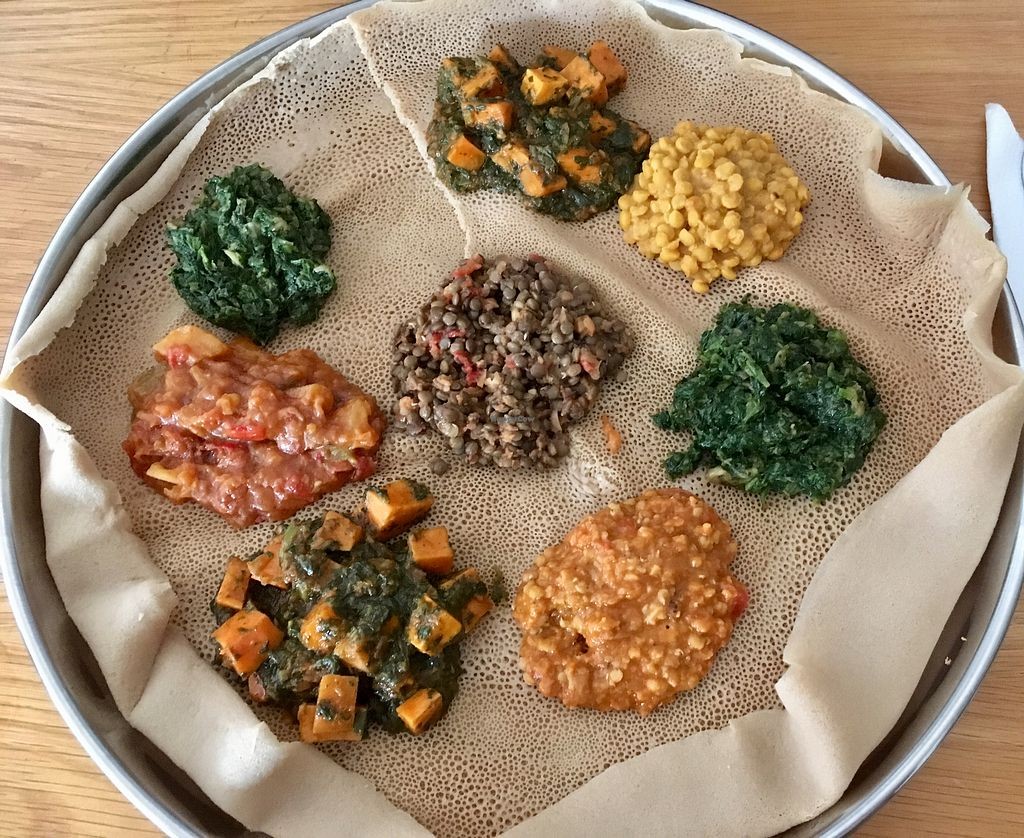Introduction: Eritrean Cuisine
Eritrean cuisine is a unique blend of flavors and spices that reflect the country’s diverse cultural influences. The country’s cuisine draws inspiration from its neighboring countries, such as Ethiopia, Sudan, and Djibouti, as well as from its colonial history. Eritrean cuisine is characterized by its use of spices and herbs, which add depth and flavor to its dishes.
Eritrean cuisine is a significant part of the country’s culture and is typically enjoyed in communal settings, such as family gatherings, weddings, and religious events. The cuisine is also a symbol of national identity and heritage for Eritreans, and its popularity has spread beyond the country’s borders, with Eritrean restaurants now found in cities worldwide.
The Influence of Geography on Eritrean Cuisine
Eritrea’s geography has played a significant role in shaping the country’s cuisine. The country has a diverse landscape, with highlands, plains, and coastal regions. As such, Eritrean cuisine varies by region, with each area having its own unique flavors and cooking styles.
In the highlands, where most of the country’s population resides, the cuisine is characterized by its use of grains, such as teff, barley, and wheat, and pulses like lentils and chickpeas. In the lowlands, which are mostly arid, dishes are typically spicier and use fewer grains. Coastal regions, on the other hand, feature seafood-based dishes, such as grilled fish and shellfish stews.
Common Eritrean Ingredients
Eritrean cuisine uses a variety of ingredients, including vegetables, grains, and meats. Commonly used vegetables include collard greens, spinach, and tomatoes, while grains such as teff, barley, and wheat are used to make bread and porridge. Meat dishes are typically made with chicken, beef, or lamb, and seafood is popular in coastal regions.
Legumes such as lentils, chickpeas, and fava beans are also widely used in Eritrean cuisine, both as a protein source and to add texture to dishes. Dairy products, on the other hand, are not commonly used, although yogurt and cheese are sometimes served alongside certain dishes.
Eritrean Spices and Herbs
Spices and herbs play a crucial role in Eritrean cuisine, providing depth and flavor to dishes. Popular spices include cumin, coriander, and cardamom, while herbs such as basil, mint, and thyme are also used.
Berbere, a spice blend made from chili peppers, garlic, ginger, and other spices, is perhaps the most famous spice blend in Eritrean cuisine. It is used in a variety of dishes, from stews to grilled meats, and is known for its signature fiery flavor. Other commonly used spices include turmeric, cinnamon, and paprika.
Regional Variations in Eritrean Cuisine
As mentioned earlier, Eritrean cuisine varies by region, with each area having its own unique flavors and cooking styles. In the highlands, dishes tend to be milder and use more grains, while dishes in the lowlands are spicier and use fewer grains.
In the coastal regions, seafood-based dishes are popular, while in the central regions, stews and soups are more common. Despite these regional variations, Eritrean cuisine is still characterized by its use of spices and herbs, which add depth and flavor to all dishes.
Level of Spice in Eritrean Dishes
Eritrean cuisine is known for its bold flavors, and many dishes are spiced to varying degrees. However, not all Eritrean dishes are spicy. Some dishes, such as injera (a sourdough flatbread) and shiro (a chickpea stew), are mild and rely more on herbs for flavor.
However, for those who do enjoy spicy food, Eritrean cuisine does not disappoint. Many dishes are spiced with berbere or other chili blends, providing a fiery kick to the palate.
Traditional Eritrean Recipes
Traditional Eritrean recipes are typically passed down from generation to generation and vary by region and family. Some popular dishes include tsebhi (a stew made with meat and vegetables), zigni (a spicy beef stew), and tihlo (a porridge made from roasted grains).
Injera, the sourdough flatbread, is a staple in Eritrean cuisine and is typically served with most dishes. Coffee is also an important part of Eritrean culture and is often served alongside traditional snacks such as halva (a sesame-based sweet) and buna (roasted coffee).
Conclusion: Is Eritrean cuisine spicy?
While Eritrean cuisine is known for its use of spices, not all dishes are spicy. Eritrean cuisine varies by region, with some areas favoring milder dishes, while others prefer spicier fare. Regardless of the level of spice, Eritrean cuisine is characterized by its use of herbs and spices, which provide depth and flavor to all dishes.

